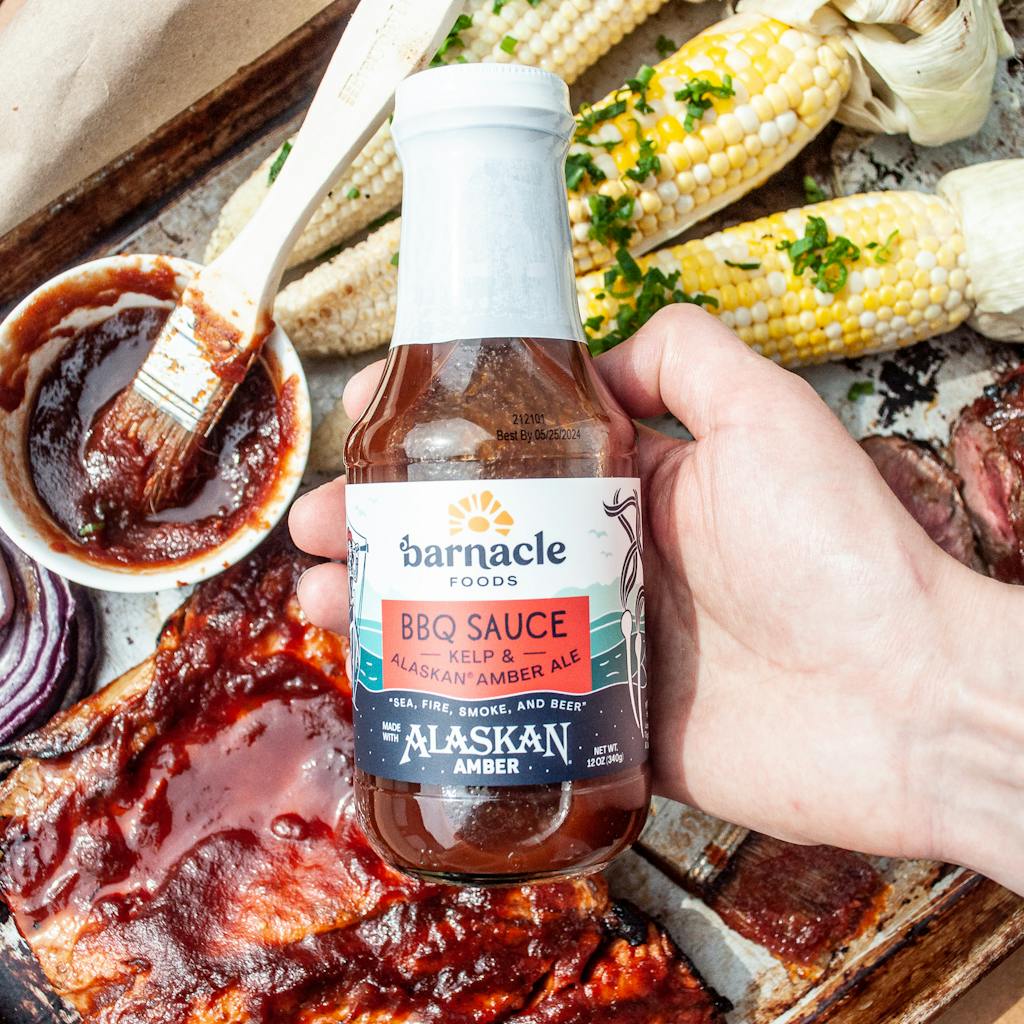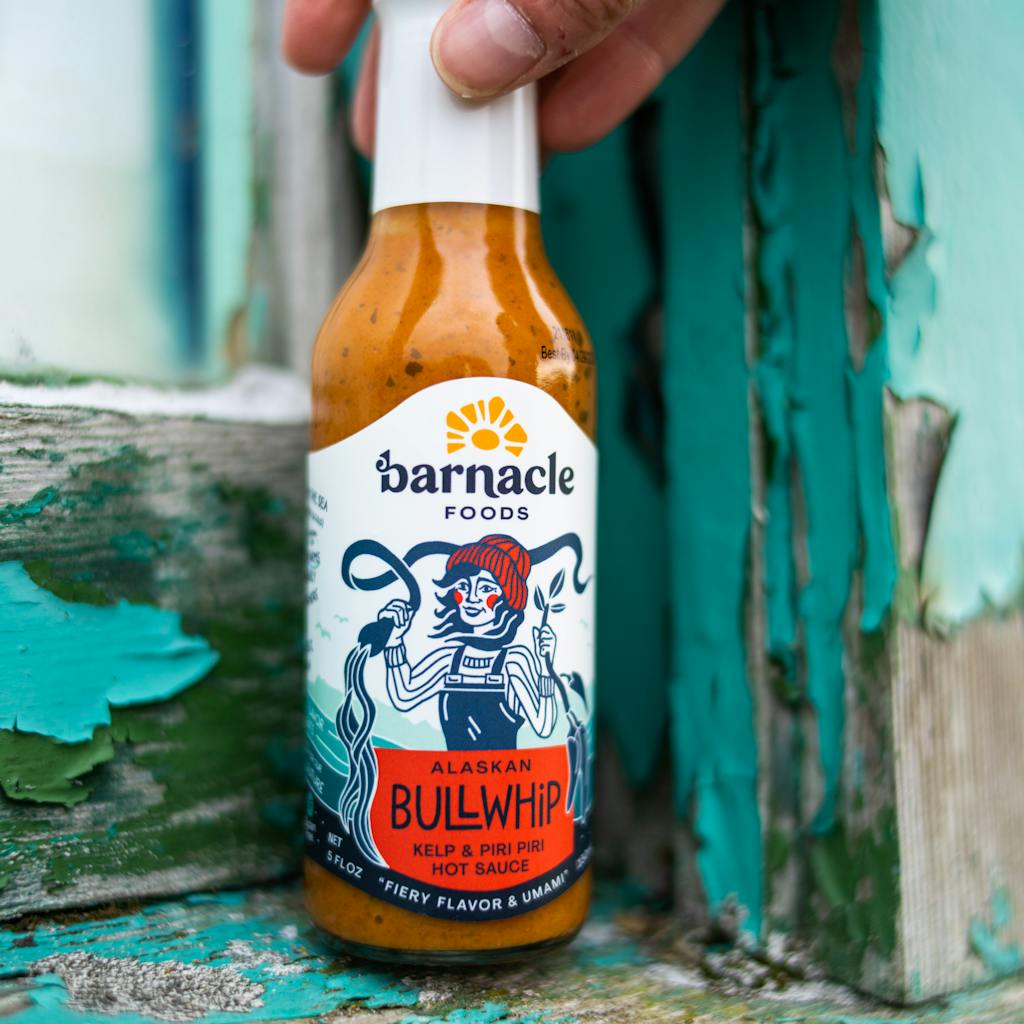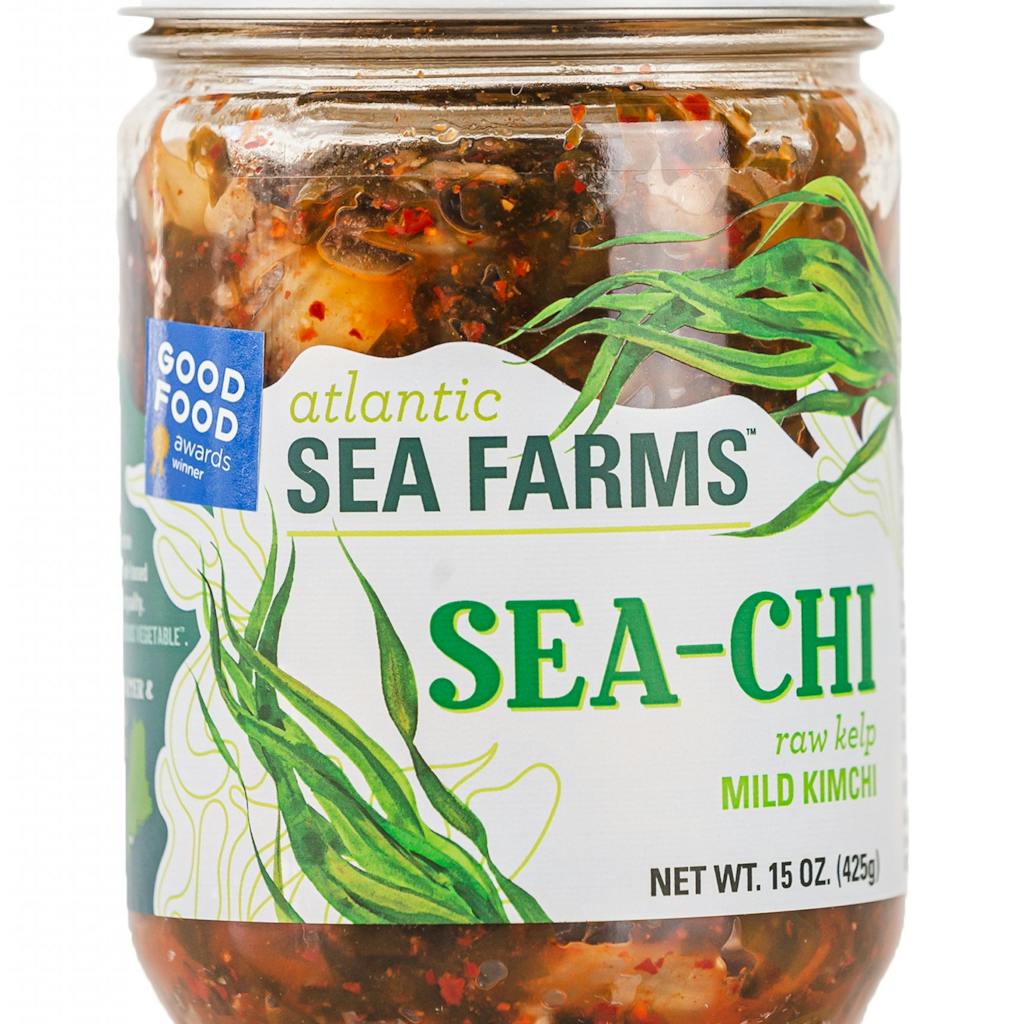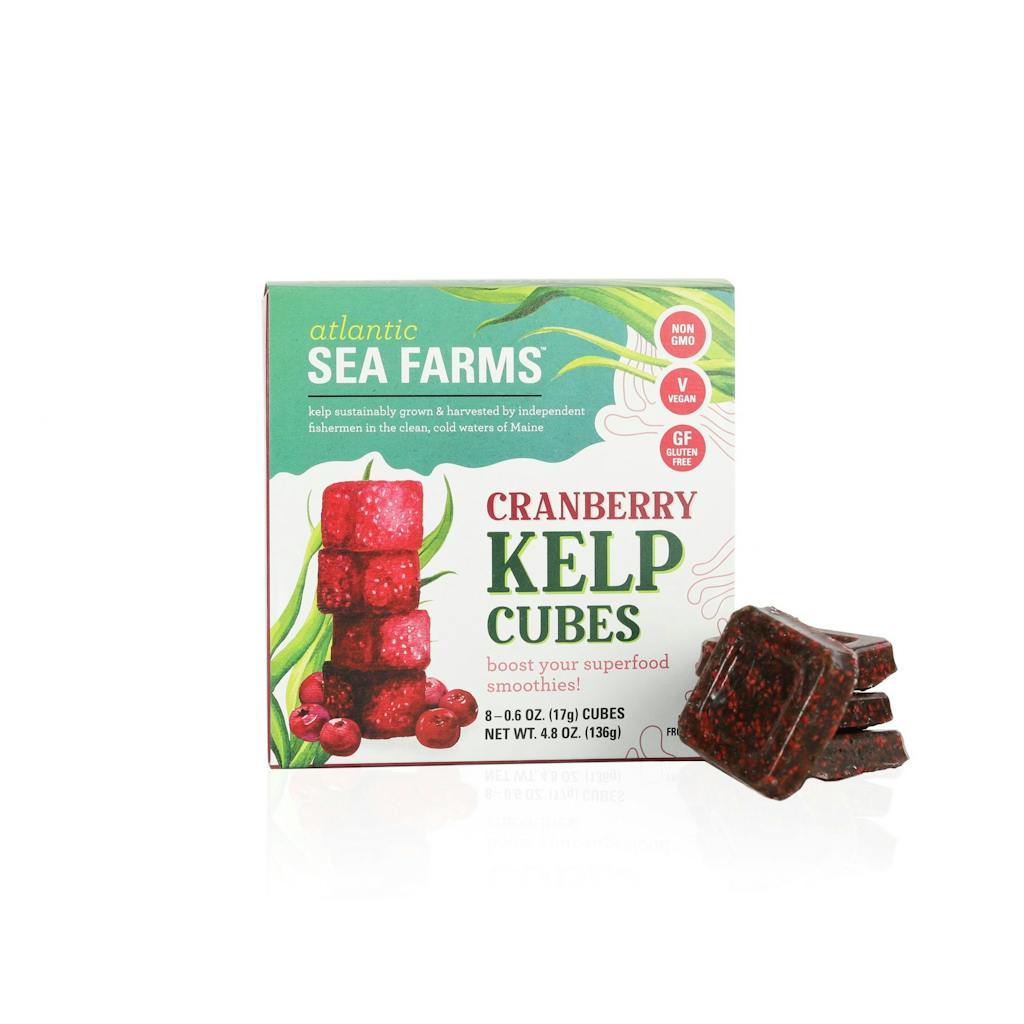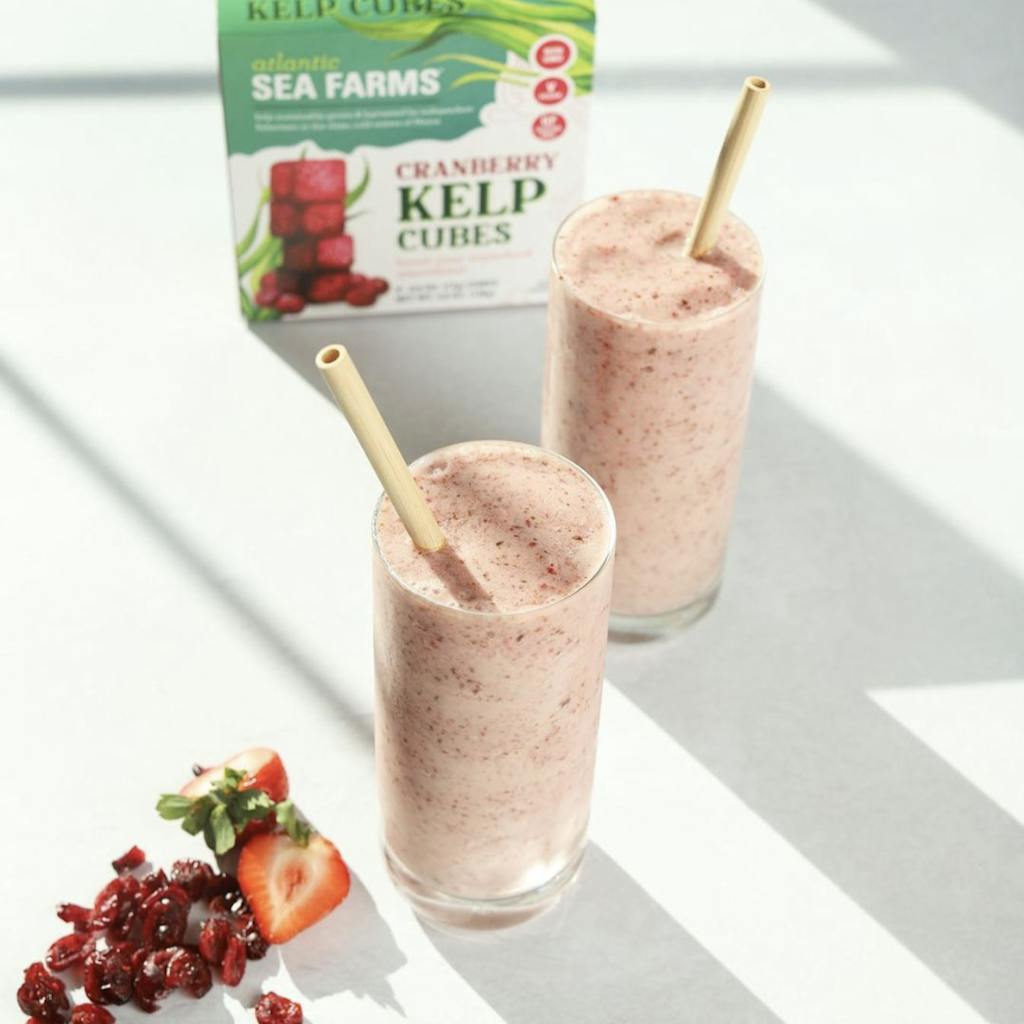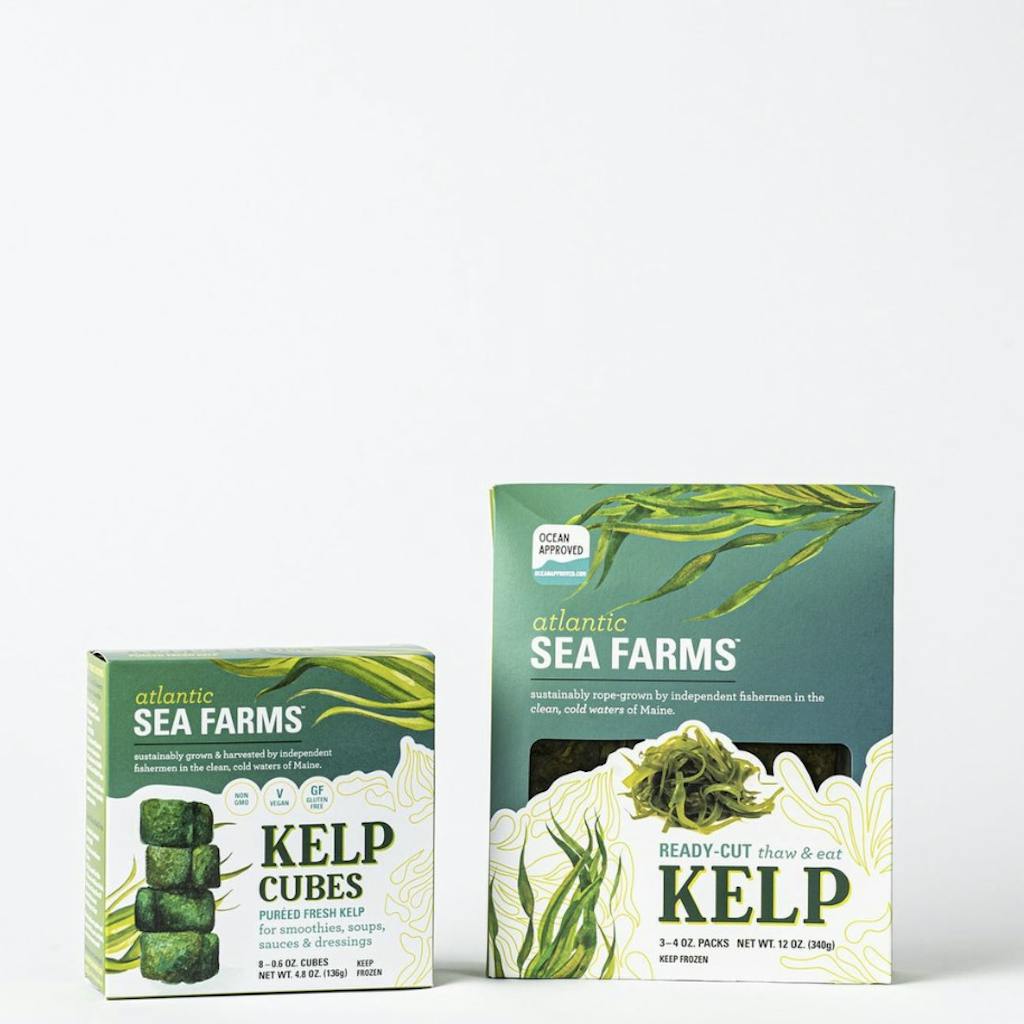We all know that lovely, briny smell we inhale when we’re by the ocean. Last night, I drank that smell.
I made a blueberry-kelp smoothie using frozen kelp cubes—it had just the faintest whiff of seaweed, and a much larger gulp of deliciousness.
Kelp is starting to gain recognition among consumers and there are three reasons:
- It’s a carbon-neutral—possibly carbon-negative (emitting less than zero carbon dioxide, meaning it actually removes CO2) though that’s not confirmed—crop that draws carbon dioxide out of the air. When kelp is removed from the ocean, it takes that CO2 with it, reducing ocean acidification. It’s also regenerative and requires no water or fertilizer, so it’s a climate change superhero.
- Secondly, kelp is a superfood—an excellent source of iodine and micronutrients. It also, incidentally, has an umami-rich flavor, making it great to cook with and eat.
- And finally, you’re likely to be more aware of it because it’s popping up in all kinds of products, along with seaweed. (Kelp is a species of seaweed.)
My kelp cubes were from Atlantic Sea Farms, which offers three flavors (blueberry, cranberry, plain) and three jarred products (Sea Beet Kraut, Sea-Chi kimchi and a fermented seaweed salad). Other companies with kelp offerings include Barnacle foods in Juneau, Alaska, which offers hot sauce, salsa, and seasonings, and Maine Sea Coast vegetables which sells flakes, seasonings, supplements, and bars.
In the U.K., a nation with a lot of coastline and, thus, seaweed and kelp, there are companies including The Cornish Seaweed Co, whose products include flaked seaweed, seasonings, and crackers, and personal care products like foot cream and soap; and Mara Seaweed in Edinburgh, which sells dried, flaked, and powdered seaweed.
Kelp is becoming so popular that the WGSN Food & Drink social media influencer map named it one of the top six global food trends of 2022.
“Kelp is growing in importance across Western markets, including the U.S. and the U.K.,” says Head of Food and Drink for WGSN Food & Drink, Jennifer Creevy. “While it’s been used as an ingredient in soups and broths for some time, we’re tracking it being called out as the main ingredient across several product categories.”
Atlantic Sea Farms distributes its kelp across the U.S. and, says Zoë Croft, sales director, it’s a superior product to the imported products which are dried, rehydrated and then dyed “and highly processed,”
The company’s products are sold via e-commerce and in specialty stores like Whole Foods and Sprouts, co-ops, regional chains, and independent stores. “We’re really trying to normalize kelp consumption,” Croft says.
Sales have grown during the pandemic, pushing the company to keep innovating. And in fact, last year, Atlantic Sea Farms started working with the University of Massachusetts to increase the use of kelp on the school’s menus.
“A lot of students have been eating seaweed their whole lives and care about the impact their food choices have and kelp being carbon-negative is a huge win,” Croft points out.
Barnacle Foods debuted six years ago and ships its products across the country, to consumers and specialty retailers.
The early adopters of these products tend to be “people who are well-informed about climate change and take actions in how they purchase items for themselves because of their values,” says co-owner Lia Heifetz. “As our business has grown, the customers we’re now reaching are mainstream.”
To make the foods more appealing to consumers worried about a seaweedy taste, Barnacle has put kelp and seaweed into familiar foods. “We designed our products so they’re flavor first and appeal to people with all kinds of tastes and preferences.”
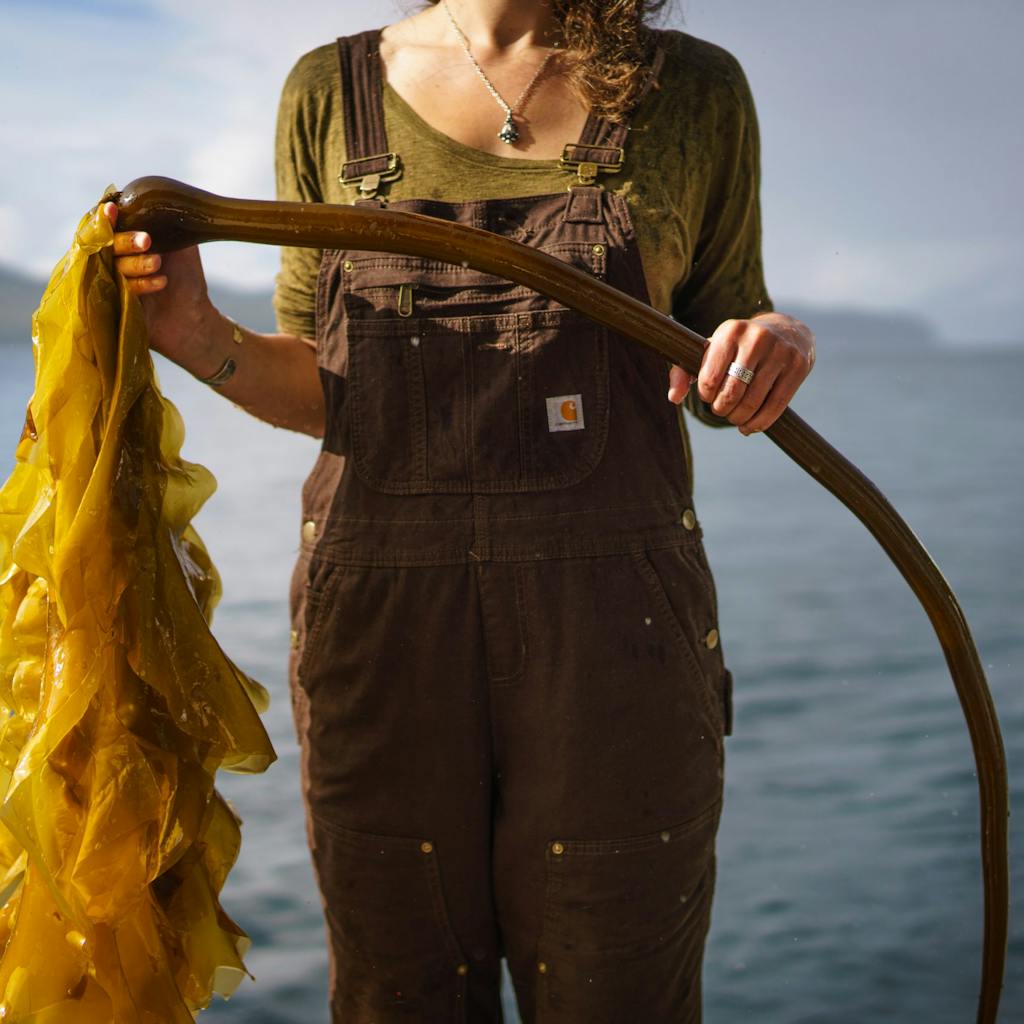
WGSN’s Creevy expects to see more kelp, both in retail, restaurants, and packaged goods.
“Chef Matthew Kenney’s new restaurant in London has a dish of kelp noodles. Innovator brands are also using kelp in different ways, including kelp ‘crab’ cakes, kelp as an ingredient in a zero-alcohol drink, and even kelp muffins. We will see more innovations in packaged goods over the next year,” she says.
In the U.S., 67% of U.S. consumers have heard of kelp, according to market research firm Datassential, and 26% have tried it.
“Seaweed has gone from a product that consumers only know because it holds their sushi together to a category that includes crispy seaweed snacks at Costco and kelp noodles at Whole Foods,” says the company’s trendologist, Mike Kostyo.
“The tailwinds are strong for seaweed and kelp,” he points out. “The growth of Asian-inspired ingredients and dishes, the growing number of seaweed-focused food companies that are raising a lot of capital, the interest in plant-based foods and swaps, and increasing understanding of the category’s health and sustainability benefits support kelp’s growth in the future.”
And then there’s just the fact that my smoothie was delicious.
Do you have a sea-green product you want to get on retail shelves? Join RangeMe today!

